Why Dumaguete Is the Best City to Visit in the Philippines
I believe other cities are definitely worth visiting as well. Call me biased, but the memory of my visit to Dumaguete two years ago still lives today in a beautiful way, so I guess it deserves my best city and the efforts of writing a blog post to illustrate how amazing it is.
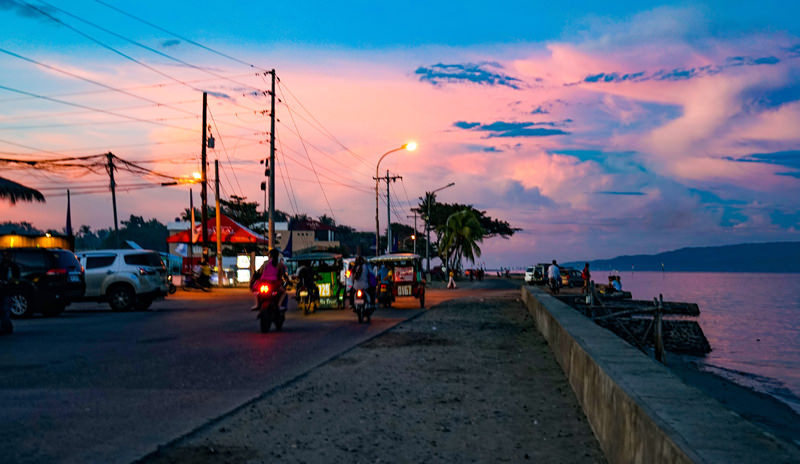 I literally had the mellow sunset like this every day throughout my stay in Dumaguete.
I literally had the mellow sunset like this every day throughout my stay in Dumaguete.
Dumaguete never came across my mind when I planned the trip to the Philippines, and I doubt it ever did to other travellers. A friend who has been there recommended it as a transit stop to Oslob, where you can swim with whale sharks. The reason for not staying in Oslob instead was that there were not much to do. I am glad that I took the suggestion, which turned out to be totally worthwhile.
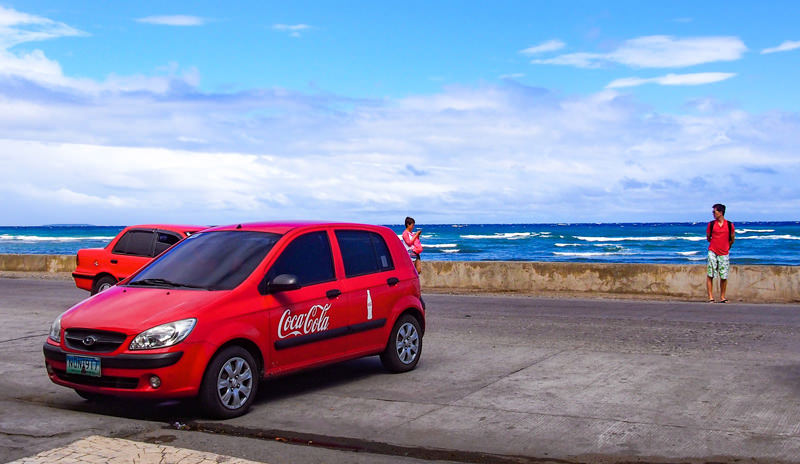 Even in the busy season, I saw only a moderate size of tourists in Dumaguete.
Even in the busy season, I saw only a moderate size of tourists in Dumaguete.
My research showed that the small city is situated on the Negro Island, with a medium population of over 130,000 people as of 2015. I flew in from Manila, the 1.5-hour flight was cheap and enjoyable. Nowadays Cebu Pacific and Philippine Airlines have daily flights connecting Dumaguete with Cebu and Manila, so getting in is not a problem.
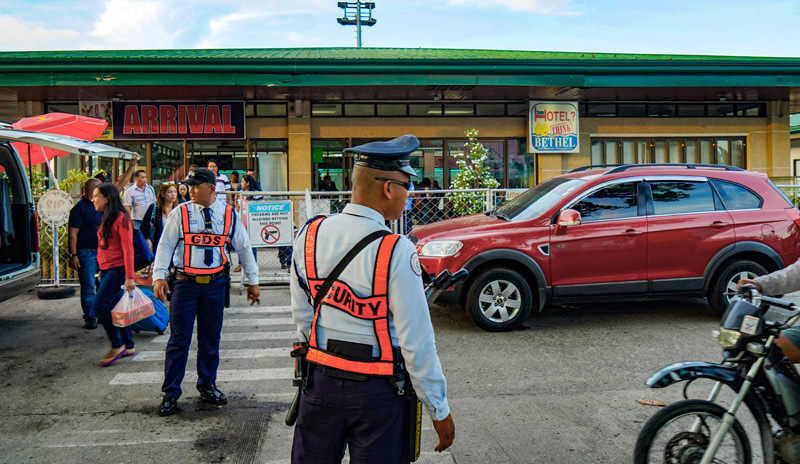 The tiny and clean Dumaguete airport.
The tiny and clean Dumaguete airport.
It was mid December, supposed to be the busy season of a Southeast Asian destination. The streets were surprisingly not packed, probably because of the steamy weather. Not far from where I stayed was the time-honoured Rizal Boulevard, which is named after the national icon, Dr. Jose Rizal, who fought for independence from Spain in the 1880s. It is hard to miss the white lamp-dotted stretch if you come to the Dumaguete pier (a must-see in town), where provides a clean beachfront promenade for people to walk besides the turquoise ocean and swaying palms. The boulevard sums up the community life. People come and picnic with families or shop in the day, while it gets livelier when the evening arrives, turning into a bustling hub of busy restaurants and bars. The cuisine on offer ranges from international flavours to Filipino dishes, which I found quite different from the ones in Thailand or Vietnam but absolutely are worth trying.
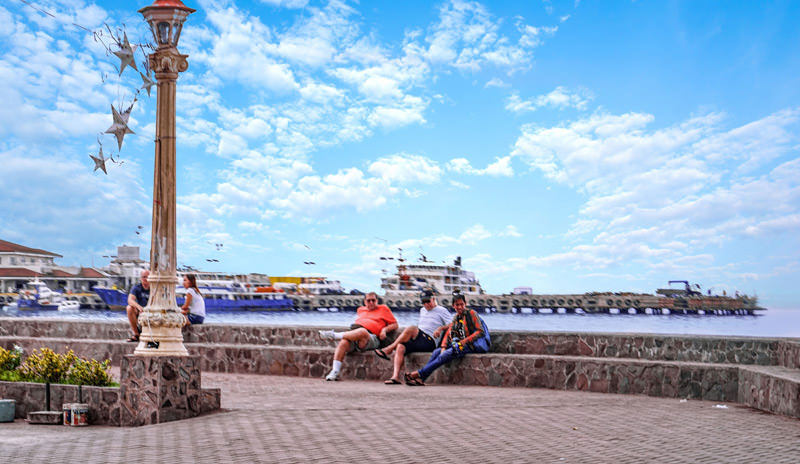 The all-time cozy Rizal Boulevard for people to chill.
The all-time cozy Rizal Boulevard for people to chill.
What intrigued me most was the street food stalls set up along the boulevard with a name called "Tempurahan", and I am not only talking about the massive number of local diners but also the seemingly monotonous snack choices. Every BBQ stall sells the same stuff: tempura, squid or fish balls, and balut (I know, leave it out if you are not feeling adventurous). Always a street food lover, I tried the tempura and fish balls, which tasted fresh with the unique sour and sweet dipping. Judging from other diners' face, I assumed everyone was happy with the food choice, or perhaps the cool sea breeze and free live music heard from some bars nearby catalyzed even more satisfaction.
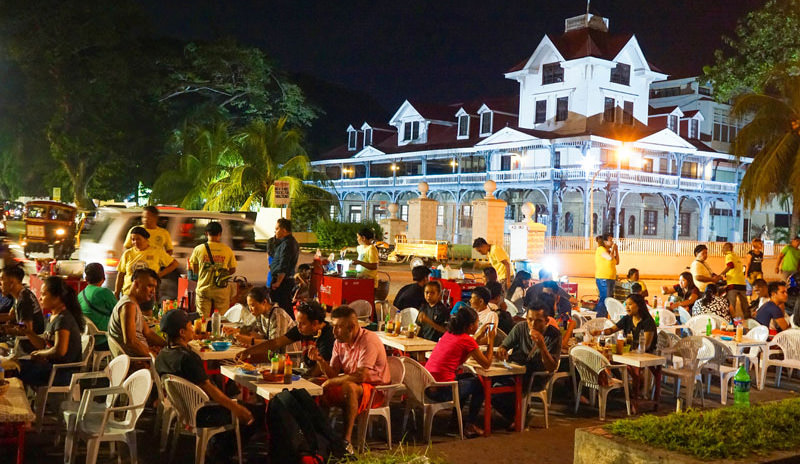 Busy evening snack stalls lining up the boulevard.
Busy evening snack stalls lining up the boulevard.
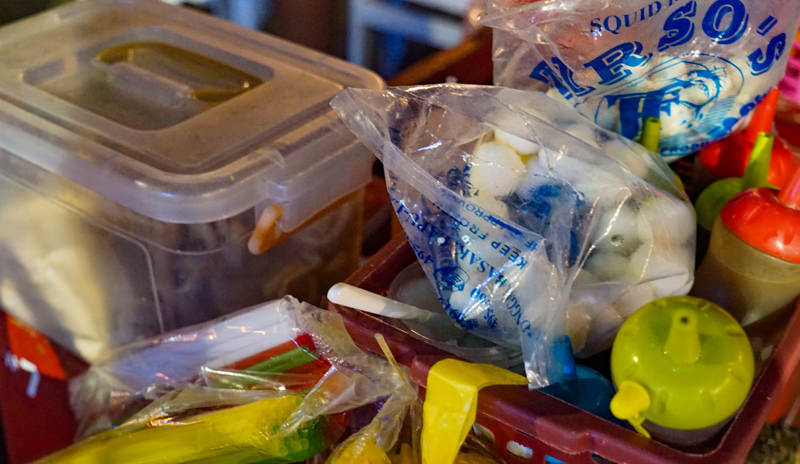 The Dumagueters love their fish balls…
The Dumagueters love their fish balls…
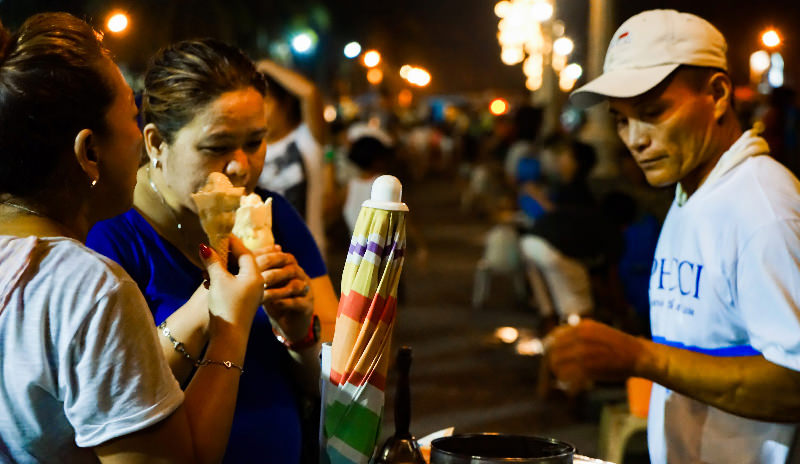 Tried the ice cream too, a great treat in a tropical winter night!
Tried the ice cream too, a great treat in a tropical winter night!
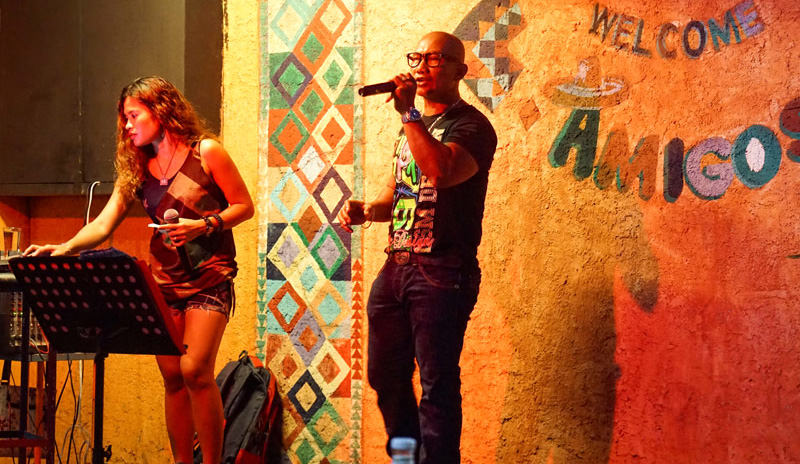 A night-out in Dumaguete is of less hassle but more authentic vibes of the Philippines.
A night-out in Dumaguete is of less hassle but more authentic vibes of the Philippines.
Thanks to the presence of a handful of universities and educational institutes, Dumaguete has a ubiquitous academic vibe. It is hard not to come across a group of jolly students in an ice cream shop or on the streets, a strong indicator that the city is pretty safe for both tourism and studies.
Asia's first American university, Silliman University is among some of the best to visit. The university was built in 1901 in a convenient, central location of the city. Took a leisure walk in the picture-perfect campus and enjoyed my quiet time sitting on a bench, unfolding the old days of my school life.
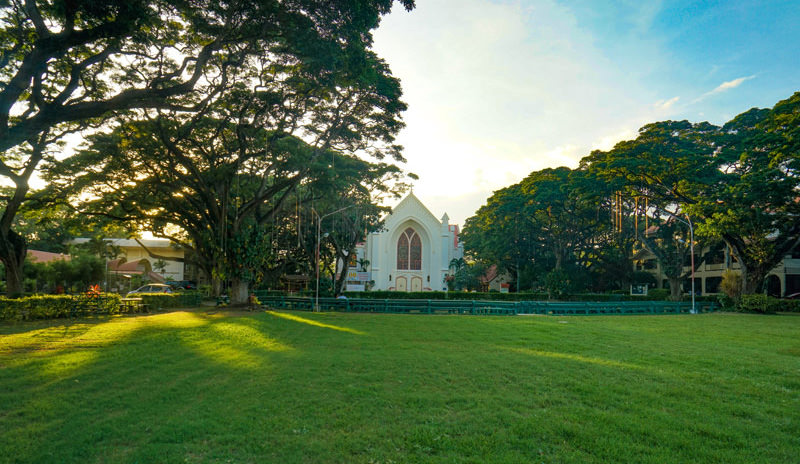 In the center of the campus is a large green field flanked with age-old acacia trees and a Christian church.
In the center of the campus is a large green field flanked with age-old acacia trees and a Christian church.
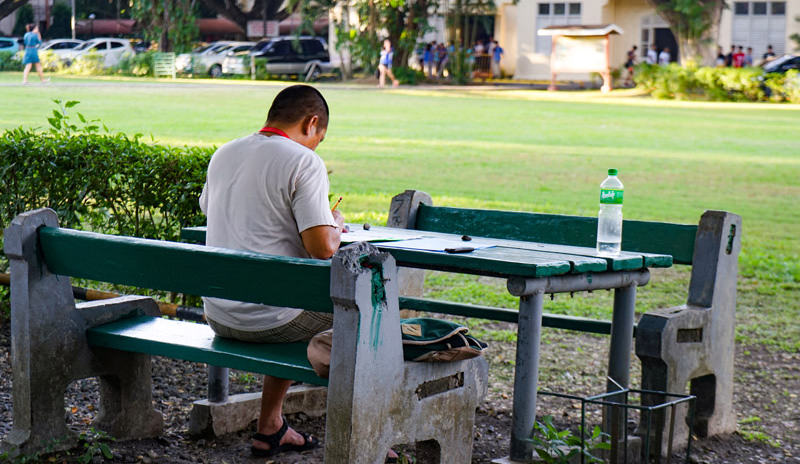 Who would not enjoy studying in a nice environment like this?
Who would not enjoy studying in a nice environment like this?
In a temperature of over 36 Celsius Degrees, the generously air-conditioned Silliman University Anthropology Museum seem to be a cool haven, yet I found the display more interesting. Established in 1970, the museum is bound in the university's Hibbard Hall, housing a collection of the Cultural Research Centre that congregates prehistoric artifacts from local indigenous groups of the Negros Island and sites in the vicinity. With a small entrance fee of $100 peso (around $2 USD) you can explore exhibits include excavated burial objects, tools, gemstones and traditional medical practices dated back 500-200 BC, a first-hand viewing of the ancestral beginnings of the Filipino.
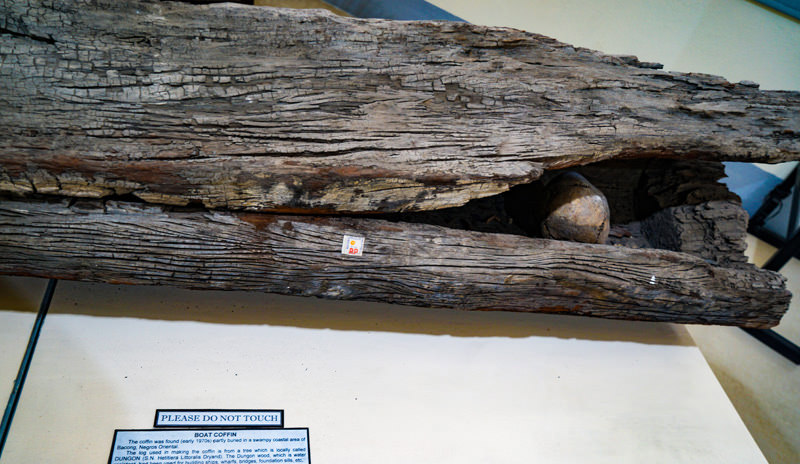 Items are all labelled and with full description.
Items are all labelled and with full description.
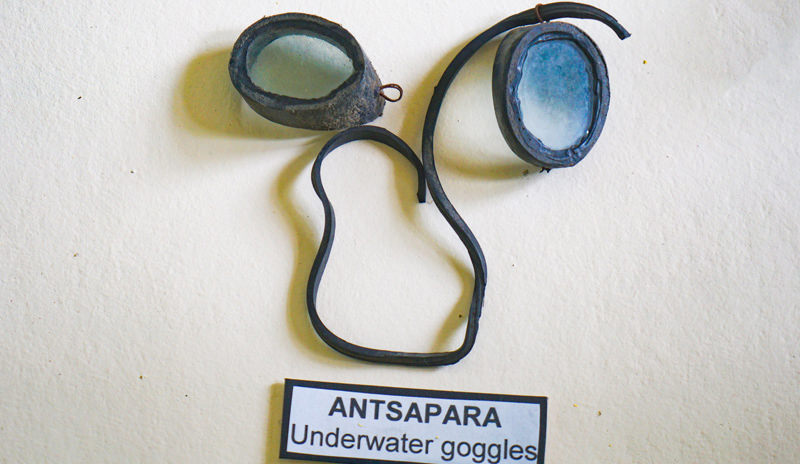 There are a certain number of interesting pieces on display.
There are a certain number of interesting pieces on display.
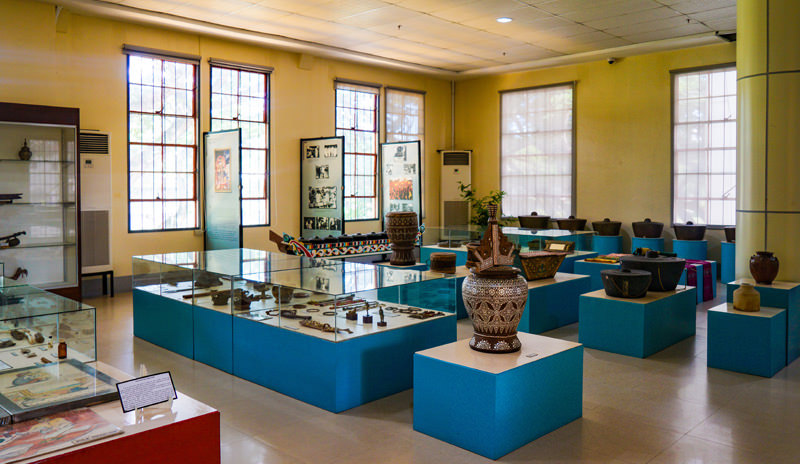 Neatly arranged items in the museum.
Neatly arranged items in the museum.
A spectacular street scene in Dumaguete is the iconic jeepneys, aka "King of the Road". This dominant mode of transport has flourished after World War II due to the lack of a mass transport system. The vehicle is basically a large van without a trunk, equipped with vis-à-vis seating and flamboyant decoration all over the surface of the car. To maximize a trip, a jeepney will not leave until it is packed with passengers. Many believe that the term of jeepneys comes from the fact that passengers need to sit knee to knee during the trip. Designed as hop-on-hop-off buses, jeepneys stop wherever the passenger desires on the route, obviously not good for efficient traffic but great convenience for the commuters. The government is moving to replace them with environmentally-friendly e-jeepneys over the next few years and hoping to decrease traffic congestion. From the perspective of a traveller, I am personally down with a greener means of transport, but I also share the feeling of many Filipinos who do not want to see the decade-long and kitsch decorations go. We will see.
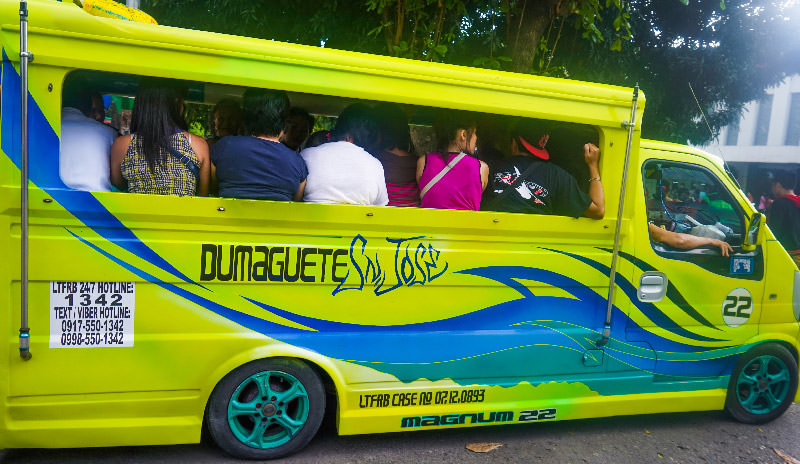 A kitschy jeepney on the street. Never caught one but I assume it'd have been a fun experience!
A kitschy jeepney on the street. Never caught one but I assume it'd have been a fun experience!
I found Dumaguete to be less messy and crowded than other cities in the Philippines. Mass tourism prevails in larger cities such as Manila and Boracay but not here, which allows greater convenience to get around and enjoy the quiet streets. I rarely spotted a piece of trash on the streets. Certainly the cleanness wins my heart and scores a point. The people there were so friendly, everyone has a gentle smile on their face. I had a fake, old-school tattoo on my left arm for the sake of taking pictures, and guess what, a bunch of people stopped to tell me they looked beautiful. Forbes cited Dumaguete as one of the best retirement places in the world, which I doubt not at all.
Like mentioned, the main reason I stayed in Dumaguete was that it provided an easy access to Oslob for a trip to swim with whale sharks, which scores another point for the charm of Dumaguete. The biggest fish in the world has got its unique Filipino name, butanding or balilan, meaning a fish who has stars on its back. We set out in the early morning and made it to the Oslob before 9 am, just in time that the whale sharks are ready for their breakfast (the krill, not us). Everyone needs to go through a briefing on rules like not wearing sunscreen and touching the whale shark before boarding the rowboat, which was great for it demonstrated a serious attitude. As the boat rowed around 200 meters offshore, three whale sharks were immediately visible.
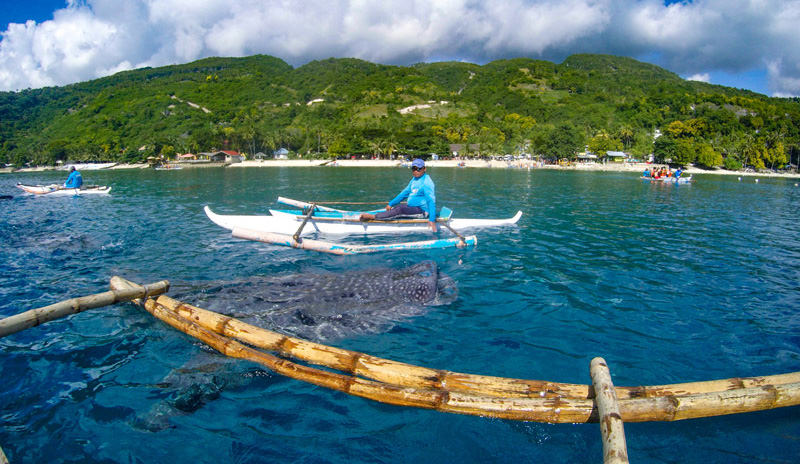 The whale sharks were right beneath the boat, ready for their treat.
The whale sharks were right beneath the boat, ready for their treat.
It was intimidating in the first few minutes because they were simply giant. Usually you can spend half an hour underwater with them, which is nice enough. Diving is a better way to appreciate the majesty of the gentle giants as snorkelling can be busier. They are literally swimming right beside you, friendly and a bit curious. What an out of the world experience of seeing them up close like that.
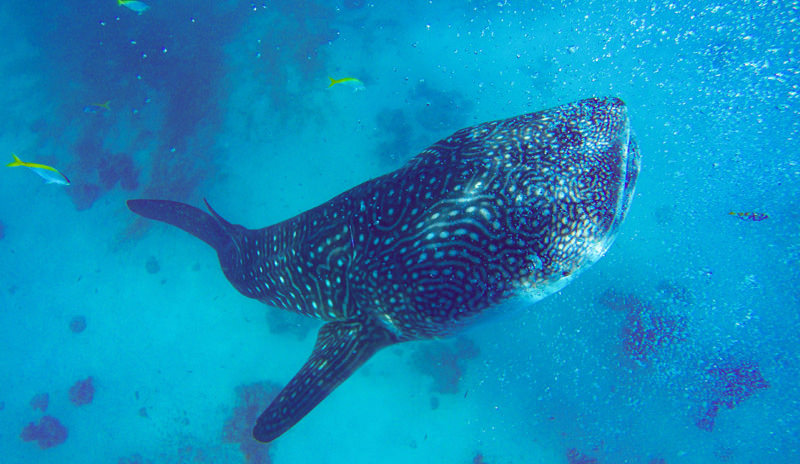 Beautifully passing, the whale shark was a massive surprise that amazed me.
Beautifully passing, the whale shark was a massive surprise that amazed me.
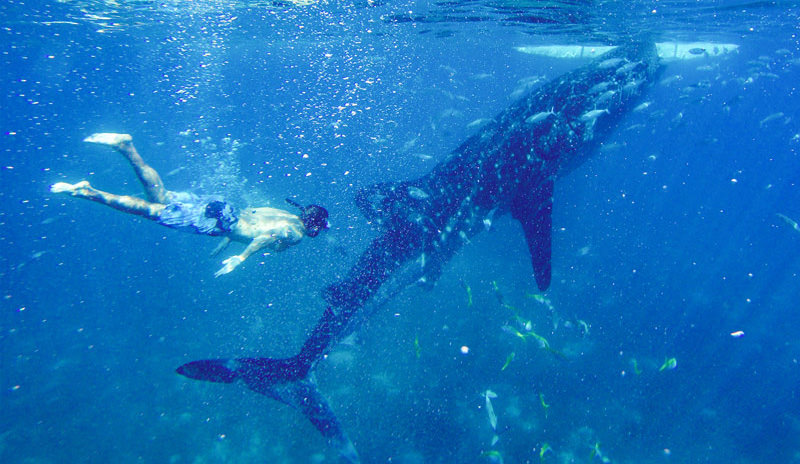 Adult whale sharks can grow up to 10 meters long, so this one was more of an adolescent but still large enough to wow us.
Adult whale sharks can grow up to 10 meters long, so this one was more of an adolescent but still large enough to wow us.
Although there are no decent beaches in Dumaguete, it takes less than half an hour to get to a number of nice beach spots in the north and south of the city. Among them are Dauin and Apo Island that guarantee a great day out diving and sunbathing, and Apo Island is teemed with nice beach resorts for more indulgence.
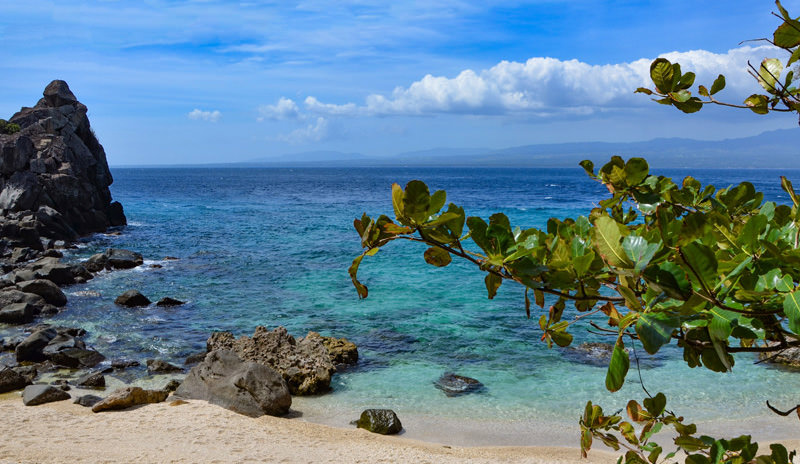 With only a short drive you can get to some serene and white-sand beaches around Dumaguete.
With only a short drive you can get to some serene and white-sand beaches around Dumaguete.
All in all, I had a great time in Dumaguete, where I don't think is comparable with other coastal cities in the Philippines. For those seeking an escape from big crowds while not compromising on the experience, the low key Dumaguete comes as a no-brainer. Contact us to tailor-make a trip to the Philippines including Dumaguete, or feel free to extend the trip to other popular Asian destinations.
Quick Question
What Our Clients Say
Explore the latest verified reviews of Odynovo's travel services on Tripadvisor, Google, Trustpilot, Product Review and more trusted platforms.
SUBSCRIBE TO WIN A FREE TOUR
Subscribe to our newsletter for a chance to win a free 7-day tour to India! And more insider travel news, exclusive offers, and inspiration will be sent straight to your inbox. Check our previous newsletters and get some sparks.

